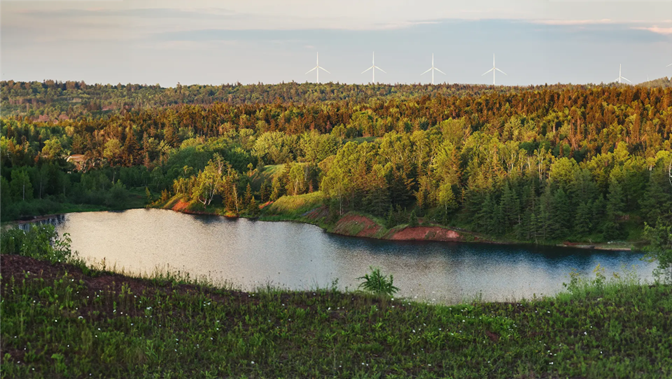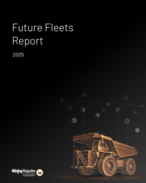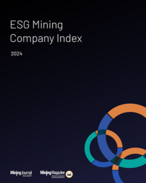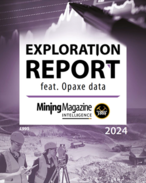Okane emphasizes the importance of integrated mine planning for effective closure. Can you explain how this approach optimizes tailings and mine rock management while reducing long-term risks?
All too often, in the lifecycle of a mine project, closure is treated as the end point with limited consideration until operations are well underway and the project approaches closure. In the early stages of mining operations, the focus is often on maximizing production and reducing costs, with closure planning aimed at achieving a "lowest regret" outcome rather than optimizing for the highest-value post-mining land use.
While closure objectives can be developed with the best intentions, many mines still lack closure landform designs, resulting in an unclear pathway to closure. This often presents challenges in meeting regulatory, stakeholder, and rightsholder expectations, along with higher-than-anticipated costs and extended timelines for post-closure activities such as active water treatment, monitoring, or maintenance.
In many cases, there are missed opportunities to collaboratively integrate the lived experiences and knowledge of closure practitioners early in the mine life and design stages. These insights can inform short-range planning to support alignment of operational and closure objectives. Integrating both tactical and strategic mine planning with closure planning from the outset of a project is considered an efficient practice for achieving this alignment.
Integrated mine and closure planning helps companies identify long-term risks and opportunities for maximizing project value. Early consideration of constructability in closure landform design allows companies to optimize material placement, reduce rehandling costs, and design stable, cost-effective landforms aligned with final closure objectives. This proactive approach helps companies set realistic expectations on closure timelines and costs, thereby reducing financial and operational uncertainties.
Integrated mine planning also provides opportunities to enhance water and geochemical management, minimizing risks associated with acid and metalliferous drainage (AMD) and long-term water treatment through incorporating methods of source control into designs. By designing mine rock storage areas that reduce environmental impact, companies can enhance regulatory compliance, and support rightsholder and stakeholder confidence, fostering trust by managing tomorrow's risk today.
Ultimately, integrated mine planning fosters a more cost-effective and responsible approach to mine closure. It promotes the idea that closure is not an end point but an ongoing process that can improve environmental and social outcomes throughout the mine life while optimizing project value.

Water management is a major challenge in mine closure. How does Okane's approach to water stewardship help minimize water quality impacts and reduce reliance on long-term water treatment?
At Okane, we support clients addressing their water management challenges through an interdisciplinary approach that integrates mine, water management, and closure plans with water modelling and long-term risk management. We recognize that costs related to water management, such as treating effluent discharge, can be significant throughout the life of mine and may often extend well beyond closure.
Our water stewardship approach considers the implementation of source control strategies in addition to pathway interception methods. Collaborating closely with clients and subject matter experts, we help identify opportunities to implement source control strategies early in the life of mine in order to minimize long-term water quality risks and contaminant transport while meeting the objectives of regulators, stakeholders, and Indigenous rightsholders.
We leverage advanced water modelling to inform water management planning and adaptive decisions, accounting for various long-term closure scenarios, risks, and uncertainties. Integrated surface water and groundwater modelling help simulate dynamic systems and highlight relationships between groundwater flow, surface water patterns, and contaminant movement. These simulations help communicate uncertainties and risks within the water management plan, supporting long-term adaptability and effective strategies to manage onsite water and minimize impacts on surrounding ecosystems.
A practical example of this approach is our work at a polymetallic open-pit mine in Scandinavia, where we supported the review of closure performance for a mine rock facility and update to the closure plan. Using numerical and analytical modelling techniques, we developed long-term acidity loading estimates for the mine rock storage facility. These models, calibrated with a decade of in-situ monitoring and field testing, helped estimate long-term oxygen ingress and net percolation rates under closure conditions.
The models guided the design of an engineered cover system for the facility, demonstrating that post-closure water quality would gradually improve as oxygen ingress is limited. The cover system would, in turn, reduce acidity loads, allowing stored acidity to flush out while natural neutralization occurs, significantly enhancing overall catchment water quality.
Our models evaluate source control and risk management options, informing closure and water management decisions. By leveraging advanced modelling tools, we help clients translate complex water management challenges into actionable strategies.

How does Okane help mining companies align closure objectives with operational goals to maintain full lifecycle value and avoid costly retrofits?
Okane's integrated mine planning solutions help maximize project lifecycle value with a focus on constructability, operational efficiency, and environmental stewardship from the outset. One such instance is our work at a Canadian mine site, where we provided construction support based on an existing closure landform design.
We identified that the proposed closure design posed significant constructability challenges. While the final design aimed to minimize additional toe disturbance and potential environmental impacts, it resulted in a significant increase in material movement by truck-and-shovel, ultimately increasing project costs and timelines. Additionally, the lack of an interim construction access road led to logistical challenges, including the need for extensive cuts beyond project boundaries and prolonged risks of slope instability.
To address these issues, Okane proposed a fully integrated design approach that provided an interim access road to support construction while meeting closure objectives for the final landform. This approach reduced the volume of material to be moved and the reliance on truck-and-shovel operations. The result was a more efficient construction process, which could be executed safely within a shorter timeline and at lower project costs.
At Okane, our designs combine both a tactical and strategic approach to closure landform design. Our approach supports final landforms that are not only sustainable but also practical and safe to construct, reducing overall costs and timelines.
Can you share a specific case study where Okane successfully implemented integrated closure landform design, with word on what key lessons were learned?
A specific case study that illustrates integrated closure landform design involved a mine where the exposed pit walls at the end of mine life posed long-term water quality challenges. Steep pit wall slopes left at the end of mine life can typically make it challenging to construct an engineered cover system. While pit lakes can help manage potential risks at closure, variations in water levels over closure timelines introduce uncertainty.
After reviewing the mine plan for this site, we identified an opportunity to backfill material against the pit wall during the operational phase. The primary objective was to prevent the pit walls from being exposed to weathering, which could otherwise result in the formation of acidic runoff. The integration of this backfilling strategy helped reduce haulage distances for material disposal during mining and simultaneously improved water quality over time.
One key lesson learned was the value of developing a closure design concept early. Identifying an opportunity for backfilling as a closure strategy led to the evaluation of expanding the pit to include lower-quality ore from the pit walls. This approach helped lower the costs of constructing an engineered cover system, thereby enhancing water quality and further optimizing the overall project value.
Okane works in close concert with the Canadian Institute of Mining (CIM) and the International Network for Acid Prevention (INAP). What does this cooperation look like, and how does this commitment to industry collaboration and knowledge sharing benefit the mining sector?
Our collaboration with the Canadian Institute of Mining (CIM) and the International Network for Acid Prevention (INAP) focuses on advancing best practices, sharing critical knowledge, and developing innovative solutions to address challenges in the mining sector.
Okane actively collaborates with INAP as contributors to key guidance documents, including the Global Cover System Design and the Evaluation of the Long-Term Performance of Dry Cover Systems. We support all phases of INAP's efforts to identify methods of source control through mine rock placement strategies to reduce water quality risks from operations through to post-closure. We collaborated with subject matter experts to develop the Rock Placement Strategies to Enhance Operational and Closure Performance of Mine Rock Stockpiles report and played a key role in establishing a Steering Committee to advance the ARD/AMD Source Control for Mine Rock Stockpiles guidance report.
With CIM, our team of experts regularly participates in events, conferences, technical luncheons, and short courses to exchange knowledge and ‘lived experiences' while promoting responsible mining practices. At the upcoming CIM Connect (May 4-7, 2025), Okane will facilitate a short course on Source Control of Mine Waste for Integrated Mine Closure and Full Lifecycle Water Stewardship. This course covers landform design principles, constructability, and source control strategies for integrated mine closure and water stewardship.
In addition to INAP and CIM, Okane also supports the Cooperative Research Centre Transformation in Mining Economies (CRC TiME) through research initiatives and sponsors the Closure Planning Practitioners Association (CPPA) to promote global best practices in mine closure planning.
How would you summarize that which distinguishes and elevates Okane's approach to mine closure from others active in the space?
Okane works with the future in mind. Our global and interdisciplinary team of engineers, consultants, and scientists has developed an innovative Roadmap to Closure that helps mining companies optimize a mine's value while supporting a long-term vision for the environment, local communities, and Indigenous rightsholders. With over 25 years of mine closure and material management, we adopt an integrated approach guided by Land and Water Stewardship, and future land uses. Our integrated approach to planning and design is supported by our knowledge base and collective ‘lived experiences' to help clients successfully achieve their closure vision.
Okane's Roadmap to Closure is an iterative process, incorporating insights from subject matter experts, stakeholder consultations, Indigenous rightsholders, and industry regulations. It allows us to systematically address material risks, define acceptable levels of residual risk, and develop practical solutions that reflect our clients' values, risk tolerance, and priorities.
Our interdisciplinary team combines mine and tailings planning, reclamation, and risk management expertise at all stages of the project lifecycle. We help clients understand how closure designs are executed to develop practical solutions that set realistic expectations, including cost estimates and execution timelines. We also support clients in addressing water management challenges through water modelling, which informs decision-making and management plans. Our approach involves minimizing contact water by considering both source control strategies and pathway interception methods. Additionally, we collaborate closely with subject matter experts to develop detailed designs for mine rock and tailings storage infrastructure incorporating surface water conveyance.
Okane champions the integration of mine closure into every phase of a mining project while maintaining project value and facilitating positive environmental and social outcomes. Our innovative solutions demonstrate a clear closure roadmap from feasibility assessment through to relinquishment.
























